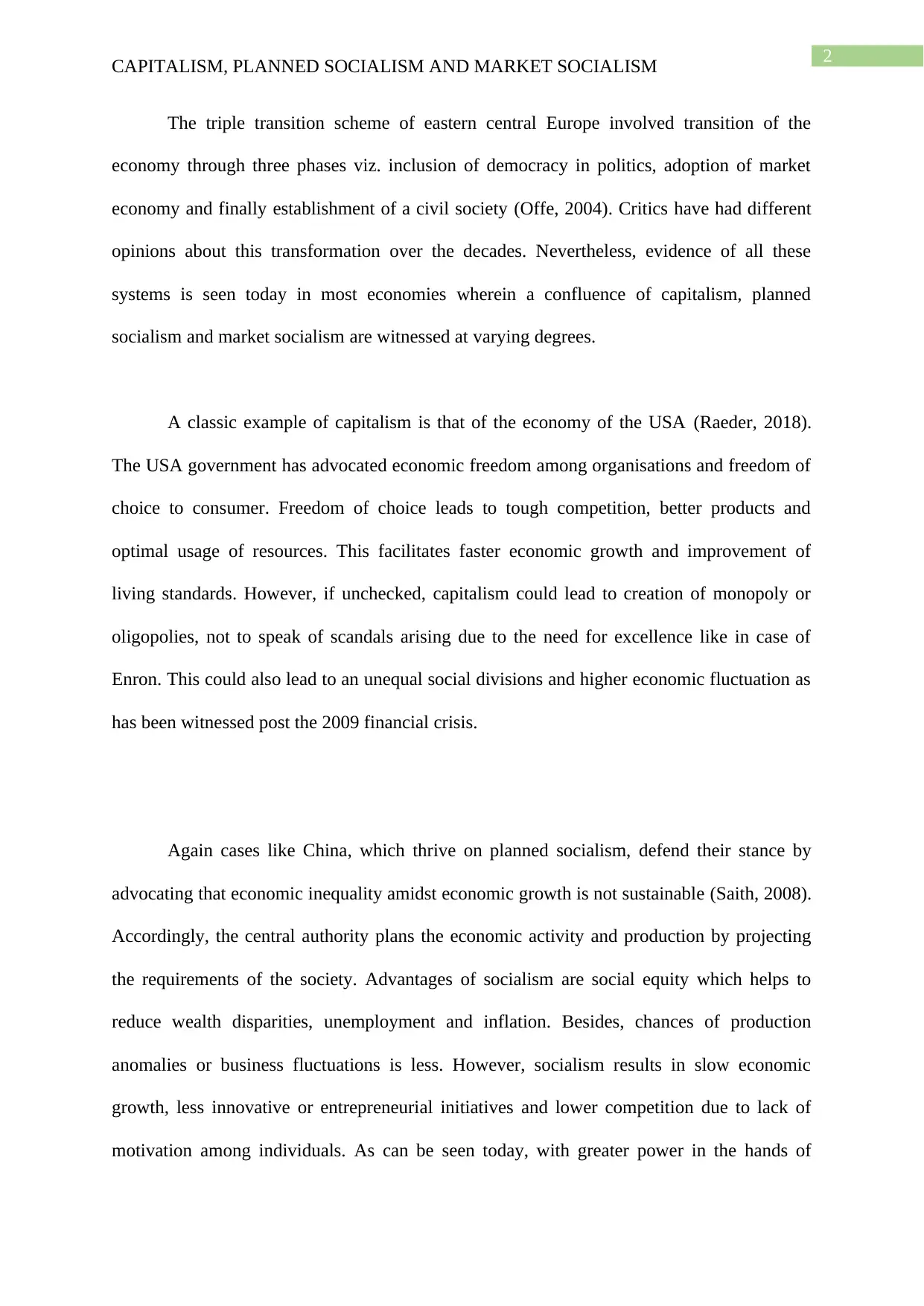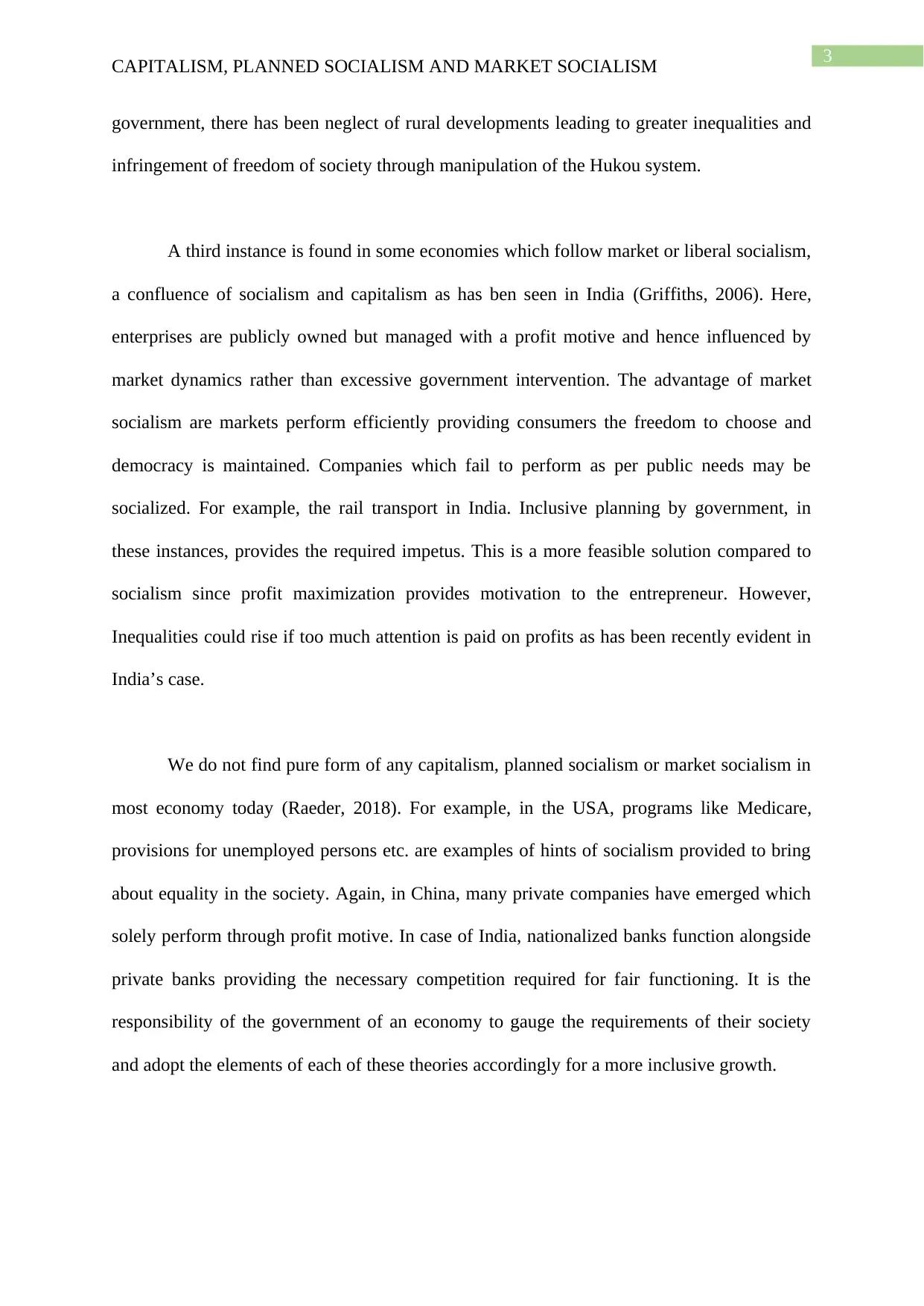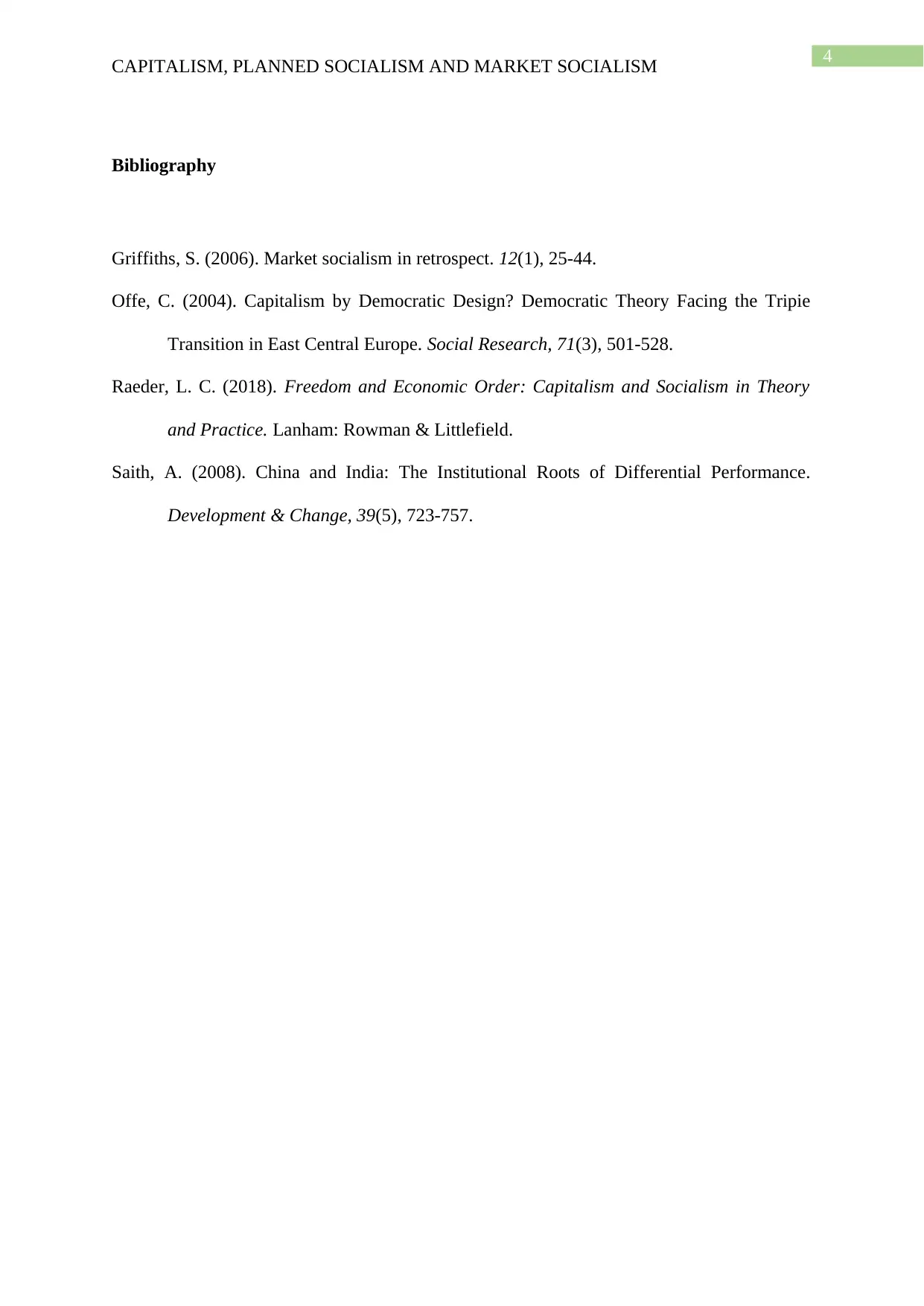A Comparative Analysis of Capitalism, Planned and Market Socialism
VerifiedAdded on 2023/04/21
|4
|774
|391
Essay
AI Summary
This essay provides a comparative analysis of capitalism, planned socialism, and market socialism, highlighting their key characteristics, advantages, and disadvantages. It uses examples like the USA (capitalism), China (planned socialism), and India (market socialism) to illustrate the practical implications of each system. The essay argues that no economy exists in a pure form of any single system and that governments must strategically adopt elements from each to achieve inclusive growth, balancing economic freedom with social equity. It also addresses the potential pitfalls of each system, such as monopolies in capitalism, slow growth in socialism, and inequality in market socialism, emphasizing the need for a balanced approach tailored to the specific needs of each society. Desklib provides a platform to access similar solved assignments and study resources for students.
1 out of 4







![[object Object]](/_next/static/media/star-bottom.7253800d.svg)